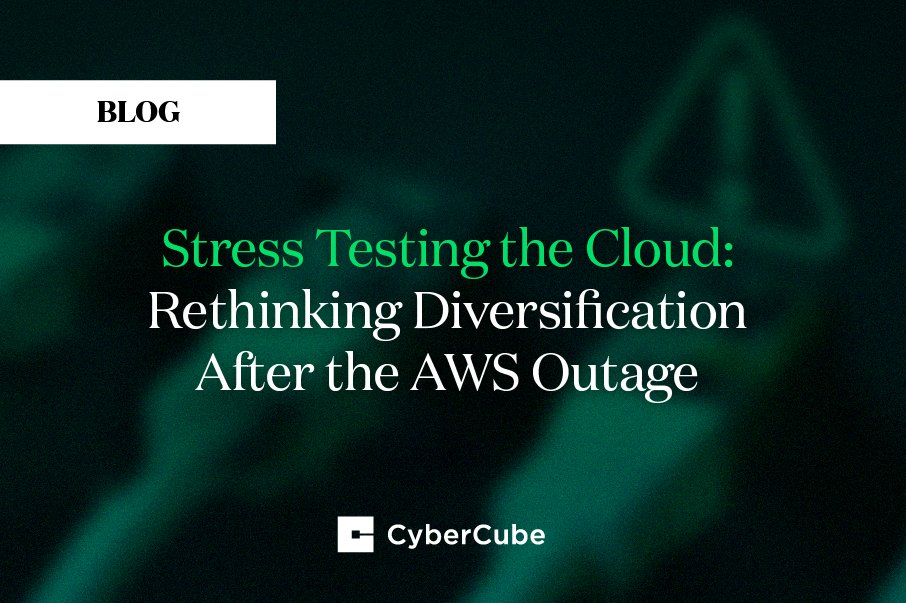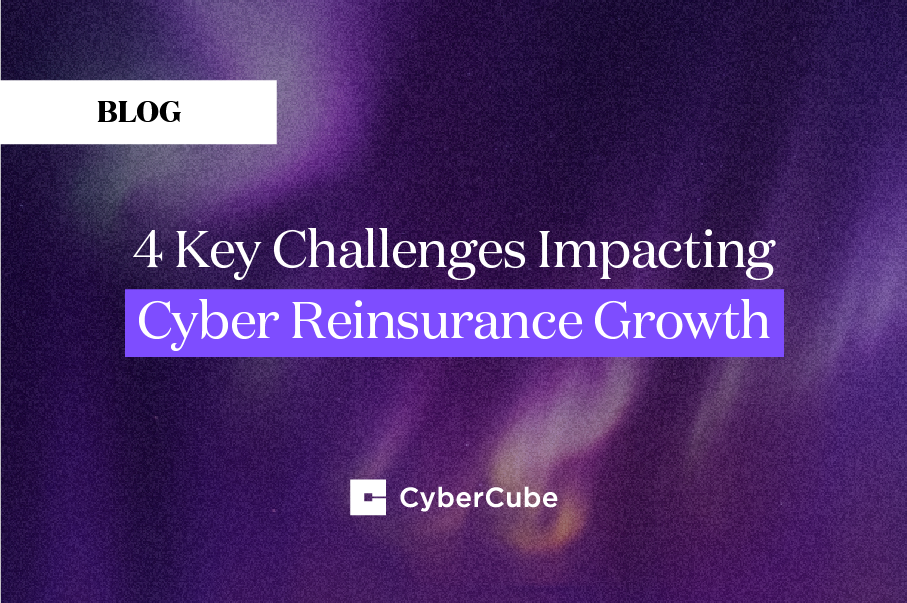The rise of cyber risk accumulation events has compelled cyber (re)insurers to focus more closely on Single Points of Failure (SPoF) within their insureds' digital supply chains.
The increasing frequency of cyber incidents — such as those involving SolarWinds, Microsoft Exchange, Colonial Pipeline, GoDaddy, CrowdStrike, and Change Healthcare — highlights the critical need for cyber (re)insurers to address Single Points of Failure (SPoF) within insureds' digital supply chains. Effectively managing supply chain aggregation risk is essential for maintaining profitability.
So how can you get ahead of this supply chain aggregation risk?
The answer lies in leveraging advanced cyber risk analytics. CyberCube offers industry-leading data analytics to help (re)insurers understand their cyber risks and make smarter, more profitable decisions.
Our SPoF Intelligence solution specifically helps you identify, assess, and manage potential accumulation risks in your portfolio. Additionally, Portfolio Manager quantifies the potential impact of similar accumulations, giving you a clearer view of your exposure.
This blog delves into how Single Points of Failure (SPoFs) are evolving, the differences between modeled and non-modeled SPoFs, and how SPoF Intelligence provides critical data to pinpoint cyber accumulation hotspots in your portfolio.
The evolution of SPoFs
SPoF attacks are becoming increasingly common, and threat actors are constantly evolving, finding new ways to exploit vulnerabilities and targeting Single Points of Failure (SPoFs) that were previously overlooked, such as open-source software (OSS), VM hypervisors, and VPN products. These emerging trends underscore the speed at which attackers adapt, creating a pressing need for (re)insurers to fully understand their exposure to SPoFs to maintain profitability.
For this article, SPoFs are defined as targeted entities within an attack scenario that have multiple dependent and interconnected entities, creating widespread risk. SPoF analysis not only helps identify concentrations of risk and overlooked technologies but also supports proactive preparation through tabletop exercises and incident simulations. Cyber analytics play a pivotal role in equipping (re)insurers with the insights needed to measure, manage, and mitigate potential losses effectively.
Understanding SPoFs is key to profitability
Understanding SPoFs can help you better manage your portfolio, both from a risk accumulation perspective as well as a loss aggregation perspective. Modeling SPoFs is a critical component of a robust cyber catastrophe model, which is why you need a solution that is able to manage SPoF accumulations reliably — this is where CyberCube’s SPoF Intelligence solution comes in. An effective cyber modeling solution, like SPoF Intelligence, offers:
- Ample data to generate actionable insights
- Validated data for accuracy and reliability
- A neutral perspective on technology dependencies
So how can understanding SPoFs lead to profitable decisions?
SPoF Intelligence with Portfolio Manager
If you have already incorporated well-grounded cat models, such as CyberCube’s Portfolio Manager, you can dig into the detailed result output and see whether your losses are driven by certain SPoFs. This enables more proactive decision-making when determining whether to underwrite submissions or when thinking about how to diversify your portfolio to mitigate risk. When extending this process to the point of underwriting, (re)insurers can also determine how a specific company’s technology dependencies will impact the portfolio’s risk accumulations.
SPoF Intelligence with the IED
Benchmarking with CyberCube’s Portfolio Manager and Industry Exposure Databases (IED) empowers (re)insurance carriers to align their portfolio performance with industry standards, addressing challenges like limited historical data or underperforming risk assessment. By creating synthetic portfolios, carriers can conduct detailed comparative analyses to evaluate their exposure concentrations, including SPoFs, and benchmark loss ratios against industry loss curves.
This enables carriers to identify areas of over- or under-exposure, optimize underwriting strategies, adjust coverage limits, and enhance profitability. For new entrants, this solution offers guidance on pricing and expected losses in unfamiliar markets, while standardized data formats streamline collaboration with brokers and reinsurers. Through actionable insights, carriers can improve portfolio management, reduce reinsurance costs, and gain a competitive edge in the cyber insurance market.
Proactively manage your portfolio’s SPoF concentrations at the point of underwriting with technology dependency data within CyberCube’s single-risk underwriting solution, Account Manager.
What SPoF Intelligence delivers
Launched in Spring 2021, SPoF Intelligence has proven invaluable for (re)insurance carriers, offering critical insights into how technological single points of failure influence Portfolio Manager’s catastrophe model and their specific impact on individual portfolios. CyberCube’s model aggregates data from diverse sources and collection methods to identify companies that rely on specific providers and technologies, enabling a deeper understanding of risk dependencies.
How SPoF Intelligence identifies exposures
CyberCube’s SPoF Intelligence provides a comprehensive view of how specific providers or technologies could trigger accumulation events in cyber catastrophe models. By analyzing detailed dependency data, the tool offers insights into the relationships between companies in a portfolio and their reliance on critical SPoFs. This includes metrics such as exposure, security posture, historical breach records, frequency and severity of outages, and critical vulnerability counts. These insights are integral to identifying digital supply chain risk concentrations, pinpointing technologies driving losses, and managing cyber accumulations effectively.
The scenario classes in CyberCube’s model are meticulously curated to reflect the most relevant and grounded representations of cyber risk for catastrophe management. SPoF Intelligence enhances portfolio risk assessment by delivering deeper insights into the dependencies and interconnectedness of modeled SPoFs, supported by data and expert scoring. This holistic view allows insurers to better understand primary risk drivers across the tail, improve claims response, and prioritize event management. Moreover, customizable footprints enable users to incorporate their own underwriting data, refining modeled results and aligning them with real-world exposure.
Enhanced insights through corporate relationships, technology dependencies, and AI
With over 55,000 SPoFs and more than 1 billion fit-for-purpose technology dependencies, SPoF Intelligence offers unparalleled visibility into the technology dependency data at the core of CyberCube’s model. The tool provides confidence ratings, importance rankings, and customizable dependencies to tailor insights to specific underwriting needs. Visual tools like heat maps highlight SPoF concentrations, while continuous data enhancement ensures accuracy and reliability through AI-driven updates. By leveraging these capabilities, (re)insurers can better manage cyber risks, optimize strategies, and bolster portfolio resilience.
SPoF Intelligence also provides insights into the parent-subsidiary relationships within a company, revealing how dependencies extend across corporate structures. This is critical for understanding how risks propagate through interconnected entities and ensuring no blind spots in portfolio assessments. Additionally, the tool delivers granular visibility into specific technology dependencies, offering a detailed breakdown of which systems, software, or providers are critical to operations.
Continuous improvements powered by AI further enhance the accuracy and relevance of SPoF Intelligence, ensuring the data remains up-to-date and reflective of the evolving cyber risk landscape. These advancements enable insurers to make more informed decisions, mitigate risks effectively, and stay ahead in managing complex supply chain exposures.
Read more about how CyberCube enhances data quality with AI in SPoF and all our products here.
Modeled vs non-modeled SPoFs: Expanding risk management capabilities
Most solutions on the market, including CyberCube’s offerings, focus on modeled SPoFs — those that assess potential financial losses based on established attack scenarios. While these modeled SPoFs are critical for understanding and mitigating risk, it’s impossible to account for every SPoF that could be targeted. That’s where non-modeled SPoFs come into play, capturing emerging risks in areas that are newer to the threat landscape or lack sufficient historical attack data for modeling.
CyberCube’s SPoF Intelligence bridges this gap by incorporating both robust catastrophe models based on modeled SPoFs and innovative solutions for addressing non-modeled risks.
The introduction of the non-modeled SPoFs feature significantly enhances SPoF Intelligence by supporting tens of thousands of unique SPoFs and detailing hundreds of millions of company-specific dependencies. This expands its utility as a pure exposure management tool, helping users identify cyber concentration risks and pinpoint where accumulation events could occur. For example, non-modeled SPoFs are particularly relevant in analyzing incidents like the CrowdStrike breaches, where losses were estimated using CyberCube’s capabilities. By integrating these insights with catastrophe models, insurers gain a comprehensive view of risk that encompasses both traditional and emerging threats.
Beyond risk assessment, CyberCube’s solutions extend to event response with tools like CAERS (Cyber Aggregation Event Response Service) and SIR (Situational Incident Reports). These solutions provide detailed insights during active incidents, helping (re)insurers understand the scope and impact of an event in real time. By leveraging SPoF Intelligence alongside event response tools, carriers can not only estimate losses more accurately but also enhance their readiness and resilience in the face of evolving cyber threats. This holistic approach ensures better decision-making, improved portfolio management, and more effective mitigation strategies.
Make profitable decisions with reliable cyber modeling
With SPoF attacks on the rise and an ever-evolving cyber threat landscape, it’s impossible to predict when the next event will occur. The best strategy is to play defense, equipping yourself with the right tools to manage your portfolio effectively. Hackers, threat actors, and nation-state attackers each operate differently, but their goal is the same: exploiting vulnerabilities for maximum impact. To defend against these threats, you need a comprehensive toolkit that includes advanced cyber modeling solutions like CyberCube’s SPoF Intelligence.
At CyberCube, we understand both your insurance goals and the complexities of cyber accumulation risks, helping you address SPoF attacks and financial losses. Our solutions provide insight into threat concentrations, enabling you to identify overlooked technologies and vulnerabilities that could fall outside your radar. Proactively conducting exercises, such as incident simulations and stress tests, prepares you for potential accumulation events and ensures you’re ready to mitigate losses when they occur.
Managing your cyber insurance portfolio doesn’t have to be overwhelming. With CyberCube’s cutting-edge analytics, you can identify risks, understand how threat actors operate, and implement the best defense strategies to prioritize profitability. Our tools give you the confidence to stay ahead, no matter how the threat landscape evolves.
If you’d like to find out more about SPoF Intelligence and how it can help improve your cyber insurance portfolio management decisions, get in touch with us today.
.png)



